Full text
PDF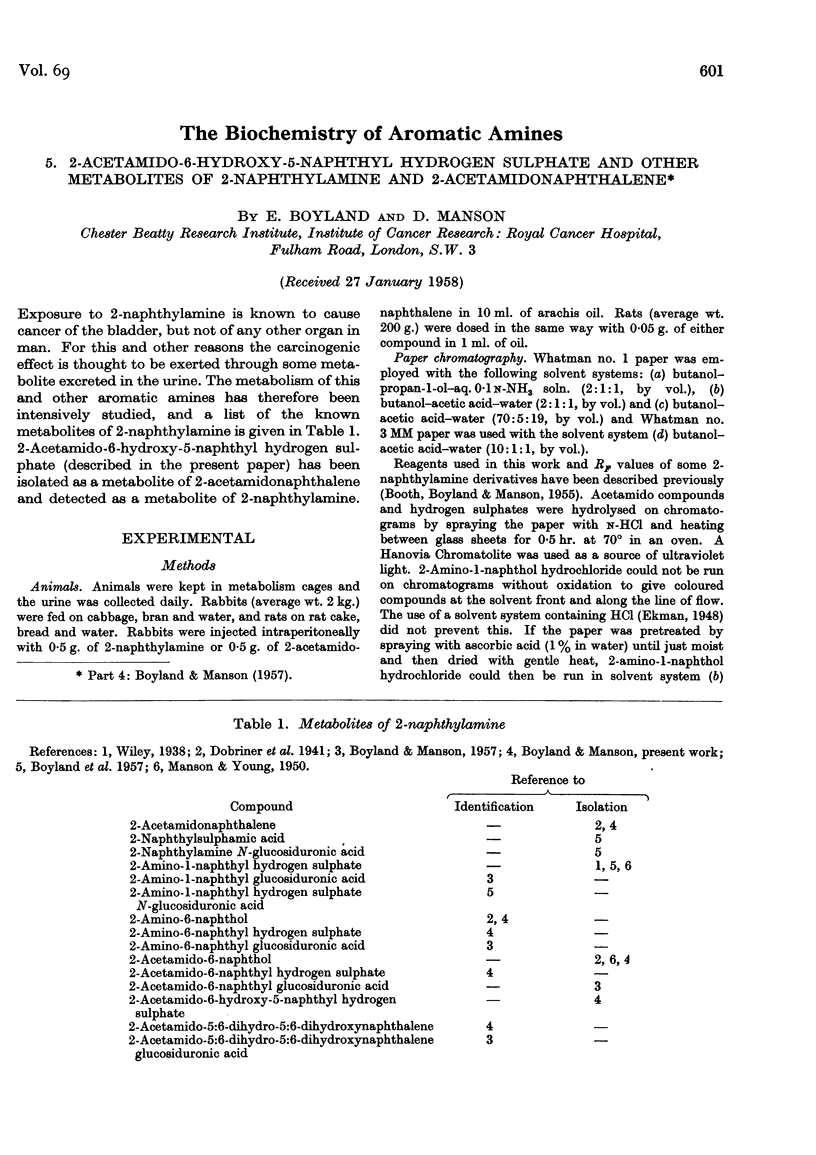
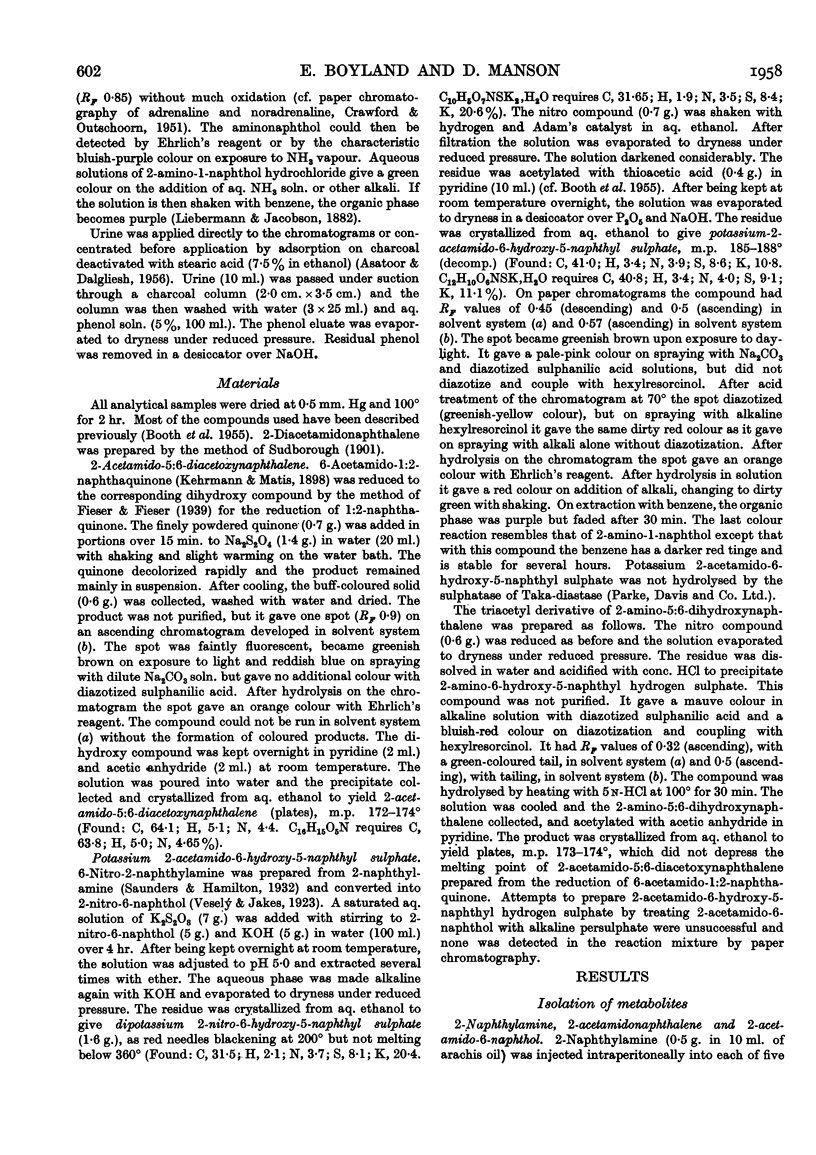
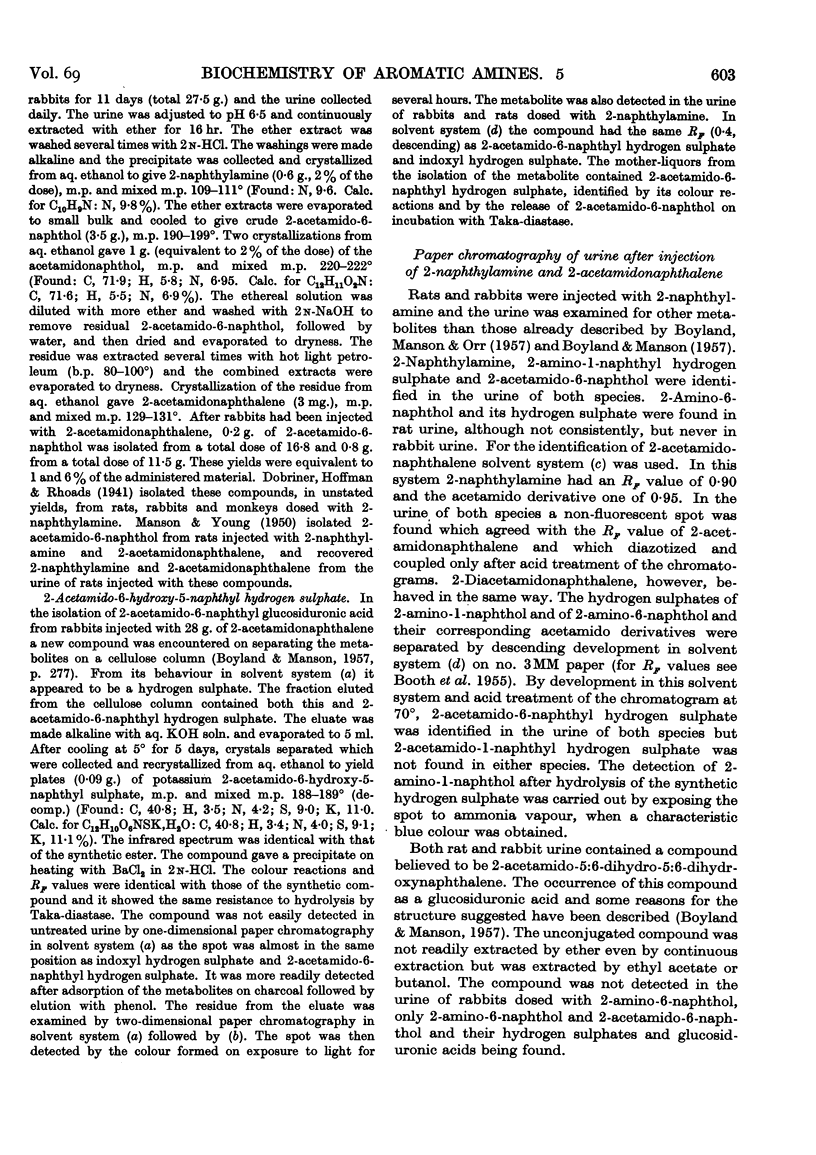
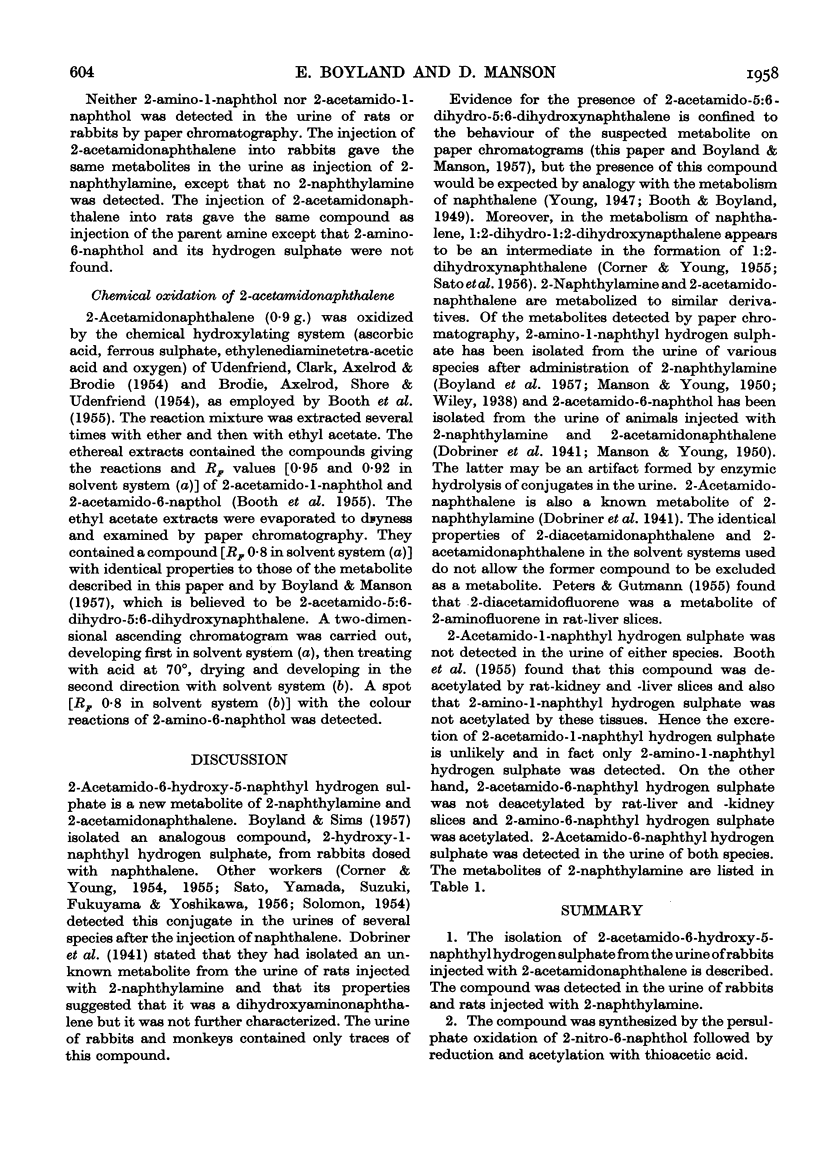
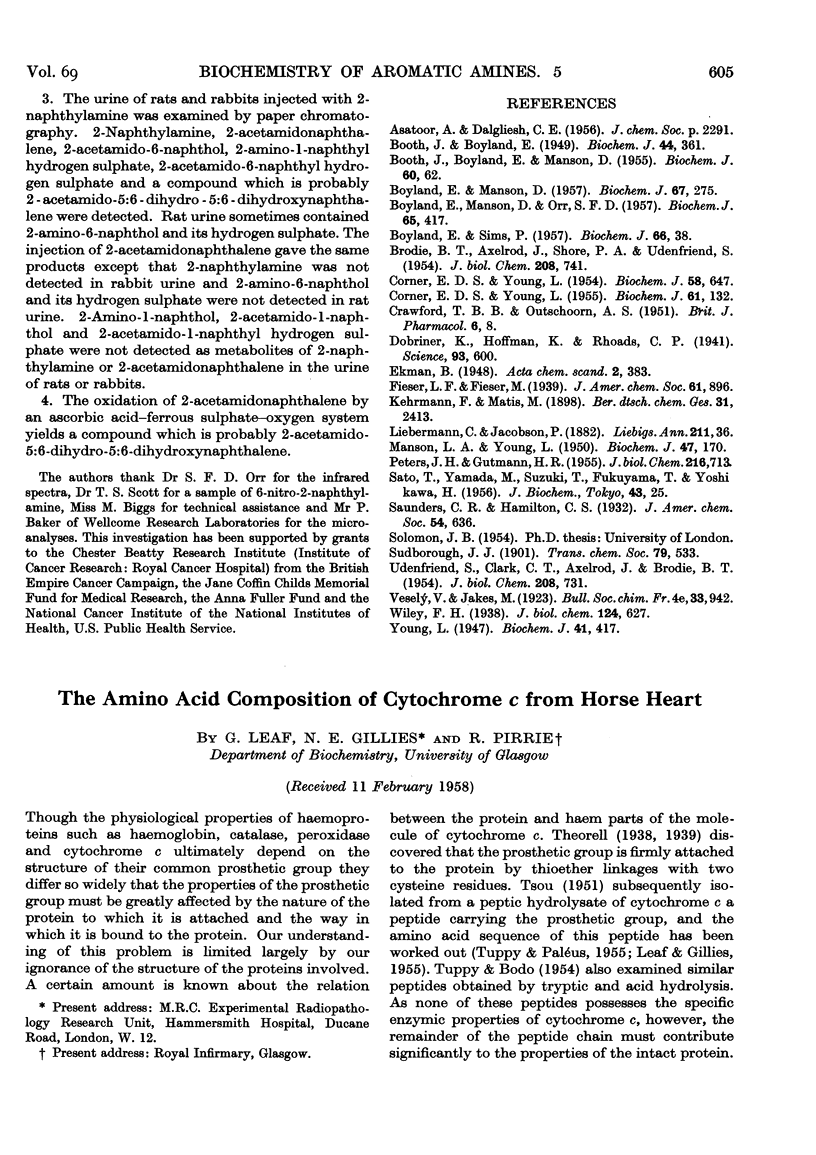
Selected References
These references are in PubMed. This may not be the complete list of references from this article.
- BOOTH J., BOYLAND E., MANSON D. Metabolism of polycyclic compounds. 9. Metabolism of 2-naphthylamine in rat tissue slices. Biochem J. 1955 May;60(1):62–71. doi: 10.1042/bj0600062. [DOI] [PMC free article] [PubMed] [Google Scholar]
- BOYLAND E., MANSON D., ORR S. F. The biochemistry of aromatic amines. II. The conversion of arylamines into arylsulphamic acids and arylamine-N-glucosiduronic acids. Biochem J. 1957 Mar;65(3):417–423. doi: 10.1042/bj0650417a. [DOI] [PMC free article] [PubMed] [Google Scholar]
- BOYLAND E., MANSON D. The biochemistry of aromatic amines. 4. O-glucosiduronic acid derivatives of 2-naphthylamine. Biochem J. 1957 Oct;67(2):275–279. doi: 10.1042/bj0670275. [DOI] [PMC free article] [PubMed] [Google Scholar]
- BOYLAND E., SIMS P. Metabolism of polycylic compounds. XI. The conversion of naphthalene into 2-hydroxy-1-naphthyl sulphate in the rabbit. Biochem J. 1957 May;66(1):38–40. doi: 10.1042/bj0660038. [DOI] [PMC free article] [PubMed] [Google Scholar]
- BRODIE B. B., AXELROD J., SHORE P. A., UDENFRIEND S. Ascorbic acid in aromatic hydroxylation. II. Products formed by reaction of substrates with ascorbic acid, ferrous ion, and oxygen. J Biol Chem. 1954 Jun;208(2):741–750. [PubMed] [Google Scholar]
- Booth J., Boyland E. Metabolism of polycyclic compounds. 5. Formation of 1:2-dihydroxy-1:2-dihydronaphthalenes. Biochem J. 1949;44(3):361–365. [PMC free article] [PubMed] [Google Scholar]
- CORNER E. D., YOUNG L. Biochemical studies of toxic agents. 8. 1:2-Dihydronaphthalene-1:2-diol and its role in the metabolism of naphthalene. Biochem J. 1955 Sep;61(1):132–141. doi: 10.1042/bj0610132. [DOI] [PMC free article] [PubMed] [Google Scholar]
- CORNER E. D., YOUNG L. Biochemical studies of toxic agents. VII. The metabolism of naphthalene in animals of different species. Biochem J. 1954 Dec;58(4):647–655. doi: 10.1042/bj0580647. [DOI] [PMC free article] [PubMed] [Google Scholar]
- CRAWFORD T. B. B., OUTSCHOORN A. S. The quantitative separation of adrenaline and noradrenaline in biological fluids and tissue extracts. Br J Pharmacol Chemother. 1951 Mar;6(1):8–19. doi: 10.1111/j.1476-5381.1951.tb00614.x. [DOI] [PMC free article] [PubMed] [Google Scholar]
- Dobriner K., Hogmann K., Rhoads C. P. THE METABOLISM OF beta-NAPHTHYLAMINE BY RATS, RABBITS AND MONKEYS. Science. 1941 Jun 20;93(2425):600–601. doi: 10.1126/science.93.2425.600. [DOI] [PubMed] [Google Scholar]
- MANSON L. A., YOUNG L. Biochemical studies of toxic agents; the metabolism of 2-naphthylamine and 2-acetamidonaphthalene. Biochem J. 1950 Aug;47(2):170–175. doi: 10.1042/bj0470170. [DOI] [PMC free article] [PubMed] [Google Scholar]
- PETERS J. H., GUTMANN H. R. The acetylation of 2-aminofluorene and the deacetylation and concurrent reacetylation of 2-acetylaminofluorene by rat liver slices. J Biol Chem. 1955 Oct;216(2):713–726. [PubMed] [Google Scholar]
- UDENFRIEND S., CLARK C. T., AXELROD J., BRODIE B. B. Ascorbic acid in aromatic hydroxylation. I. A model system for aromatic hydroxylation. J Biol Chem. 1954 Jun;208(2):731–739. [PubMed] [Google Scholar]
- Young L. The metabolic conversion of naphthalene to 1:2-dihydronaphthalene-1:2-diol. Biochem J. 1947;41(3):417–422. doi: 10.1042/bj0410417. [DOI] [PMC free article] [PubMed] [Google Scholar]


